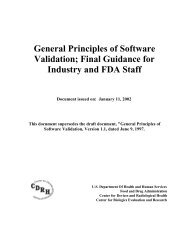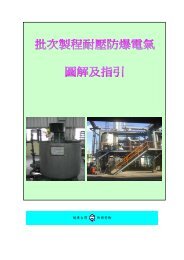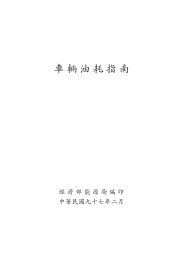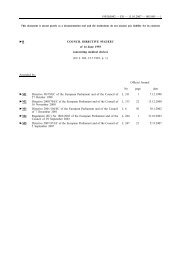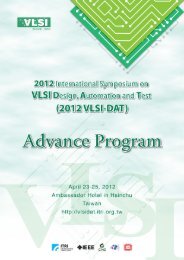Design Control Guidance - Food and Drug Administration
Design Control Guidance - Food and Drug Administration
Design Control Guidance - Food and Drug Administration
Create successful ePaper yourself
Turn your PDF publications into a flip-book with our unique Google optimized e-Paper software.
• It may not be practical to immediately revise documents affected by a changeorder. Instead, the common practice is to distribute <strong>and</strong> attach a copy of thechange order to each controlled copy of the original document.• Change control procedures should incorporate review <strong>and</strong> assessment of theimpact of the design change on the design input requirements <strong>and</strong> intended uses.• A mechanism should be established to track all change requests <strong>and</strong> change ordersto ensure proper disposition.• Change control procedures are usually administered by the document control staff.APPLICATION OF DOCUMENT AND CHANGE CONTROLS TO DESIGN. Thedesign control system has to be concerned with the creation <strong>and</strong> revision of documents, aswell as the management of finished documents. Additional mechanisms are required toprovide needed flexibility while preserving the integrity of design documentation. Theseadditional mechanisms are embodied in the procedures for review <strong>and</strong> approval of variousdocuments.It is important that the design change procedures always include re-verifying <strong>and</strong> revalidatingthe design. Fortunately, most design changes occur early in the design process,prior to extensive design validation. Thus, for most design changes, a simple inspection isall that is required. The later in the development cycle that the change occurs, the moreimportant the validation review becomes. There are numerous cases when seeminglyinnocuous design changes made late in the design phase or following release of the designto market have had disastrous consequences.For example, a manufacturer encountered problems in the field with a valve sticking in aventilator due to moisture in the breathing circuit. The problem was resolved by slightlyincreasing the weight of the disc. Since the change was minor, minimal testing wasperformed to verify the change. Subsequently, when the revised valves enteredproduction, significant numbers of valves began failing. Investigation revealed that theheavier disc was causing the valve cage to separate due to higher inertia. This failuremode was more serious than the original sticking problem, <strong>and</strong> resulted in a safety recall.Section I. <strong>Design</strong> Changes 3/11/97 Page 41



